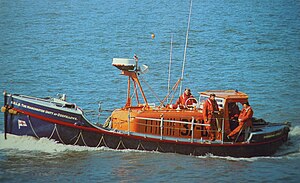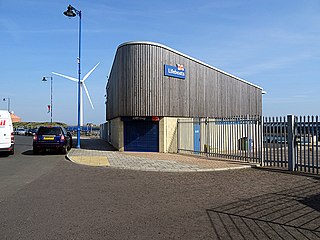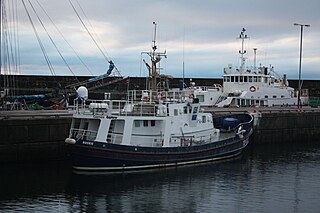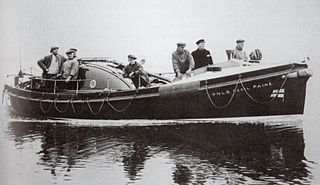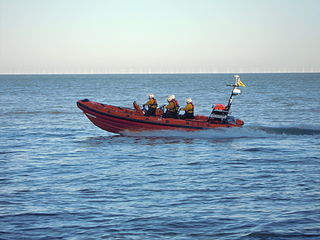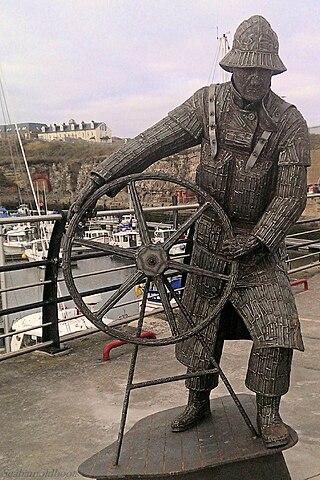RNLB Manchester Unity of Oddfellows ON 960
 |
|---|
| Date | Casualty | Lives saved |
|---|
| 1961 |
| 13 July | Four crab boats, escorted boats | |
| 8 August | Small Yacht, saved boat | 3 |
| 15 August | Converted Ships Lifeboat Lucy, saved boat | 4 |
| 1962 |
| 9 July | Converted Ships Lifeboat Sea Hawk, saved boat | 4 |
| 7 August | Fishing vessel Sprat, saved boat | 2 |
| 1963 |
| 15 August | Cabin cruiser Buccaneer, In tow of crab boat, saved boat, landed 3 | |
| 1964 |
| 1 September | Crab boat White Rose, of Sheringham, gave help | |
| 1965 |
| 20 June | Speed boat Sea Sprite, saved boat | 2 |
| 15 August | Yacht Tablet, saved yacht | |
| 15 August | Speed boat Red Barrel, landed 2 | |
| 5 September | Cabin Cruiser Sirius, gave help | |
| 1966 |
| 1 July | Motor vessel Pantarali of Panama, landed 2 and a body | |
| 1967 |
| 18 April | Four crab boats of Sheringham, gave help | |
| 1968 |
| 29 January | Motor cruiser Hilary Anne, saved boat | 1 |
| 20 May | Nine fishing boats of Sheringham, escorted | |
| 25 May | Fishing boat Tania of Sheringham, saved boat | 2 |
| 30 June | Cabin cruiser She's a Lady, assisted to save cruiser | 3 |
| 17 August | Sailing Dinghy, saved dinghy | 2 |
| 1969 |
| 9 February | Motor vessel Richmond Castle, of London, landed a sick man | |
| 17 September | Crab boat Cicely, of Sheringham, escorted | |
| 1971 |
| 3 January | Fishing boat Our Boys, of Sheringham, escorted | |
| 8 February | Fishing boat Welcome Messenger, of Sheringham, escorted | |
| 29 April | Eight fishing boats of Sheringham, stood by | |
| 3 June | Fishing boats Our Boys and Mizpah of Sheringham, stood by | |
| 9 June | Converted motor fishing boat Peggy, of Sheringham, saved boat | 1 |
| 19 June | Cabin Cruiser John Kay, saved boat | 6 |
| 1972 |
| 31 July | Cabin cruiser Cylvia, gave help | |
| 16 September | Yacht Sea Boots, saved | 2 |
| 1973 |
| 1 January | Dudgeon Lightvessel, landed a sick man | |
| 6 April | Yacht Sallie of Maldon, saved | 3 |
| 24 April | Dudgeon Lightvessel, landed a sick man | |
| 8 August | Fishing vessel Ame of King's Lynn, gave help | |
| 7 November | Haisborough Lightvessel, landed a sick man | |
| 1974 |
| 27 April | Six motor fishing vessels, escort vessels | |
| 25 November | Fishing vessel Kilsyth, landed an injured man | |
| 1976 |
| 1 January | Finnlark of Finland, landed an injured man | |
| 2 June | Yacht Blue Tit, saved boat | 2 |
| 4 September | Barge Focena, saved boat | 2 |
| 1977 |
| 5 August | Yacht Niord, gave help | |
| 25 October | Dinghy, escorted boat | |
| 1978 |
| 28 March | Fishing boat Jonathan James, gave help | |
| 5 July | Converted Admiralty supply vessel VIC.32, escorted vessel | |
| 8 September | Motor launch Ailsa, gave help | |
| 1979 |
| 29 January | Fishing boat Mizpah, gave help | |
| 5 April | Fishing boat Mizpah, escorted boat | |
| 16 April | Fishing boat Harvester, Saved | 2 |
| 26 August | Motor cruiser Dora Lee, saved | 5 |
| 1980 |
| 8 April | Fishing boats, escorted boats | |
| 1983 |
| 9 August | Cabin cruiser Cocktail II saved boat | 3 |
| 1984 |
| 11 May | Fishing boats, escorted boats | |
| 24 May | Fishing boats, escorted boats | |
| 10 August | Motor fishing vessel Venturer, saved vessel | 2 |
| 1985 |
| 20 April | Rubber Dinghy Force Four GT, saved boat | 2 |
| 13 May | Fishing boats, escorted boats | |
| 3 June | Cargo vessel Bandick of Guernsey, landed an injured man | |
| 1 August | Rafts, saved | 60 |
| 3 August | Catamaran Norwegian Blue, stood by | |
| 15 September | Two skin divers saved | 2 |
| 1986 |
| 28 October | Fishing boat Crystal Dawn, saved boat | 2 |
| 1987 |
| 25 April | Fishing boat Fragrance gave help | |
| 28 May | Motor fishing vessel Kathleen, Mizpah and Pegasus, gave help | |
| 28 May | Fishing vessel Good Courage, escorted vessel | |
| 25 July | Fishing boats, escorted boats | |
| 29 July | Fishing vessel Sea Eagle, Landed 3 sick men | |
| 4 October | Fishing vessel Caroline, saved | 2 |
| 1988 |
| 15 May | Motor yacht Kitaja, craft brought in–gave help | |
| 26 June | Fishing vessel Justifier, craft brought in-gave help | |
| 19 August | Sailboard, saved board | 1 |
| 2 September | Fishing vessel Liberty, craft brought in-gave help | |
| 1989 |
| 15 February | RoRo cargo vessel Torga Thia, of Sweden, stood by | |
| 16 April | Fiahing boat Cheryl C, svaed boat | 2 |
| 30 May | Fishing vessel Pegasus, of Great Yarmouth, escorted vessel | |
| 21 June | Fishing vessels Donna Maria and Justified, gave help | |
| 29 June | Yacht Meg, saved boat | 3 |
| 29 June | Sailing club safety boat Jeanie, escorted boat | |
| 29 June | Fishing vessel Sea Eagle, escorted vessel | |
| 1990 |
| 14 April | Sailboard, saved board | 1 |
| 15 July | Fishing vessel Blue Boy, gave help | |
| 19 August | Skin diver, saved | 1 |
| 19 August | Two motor boats, gave help | |
| 28 September | Last Service, Yacht Smiling Swiss, landed an injured woman | |
